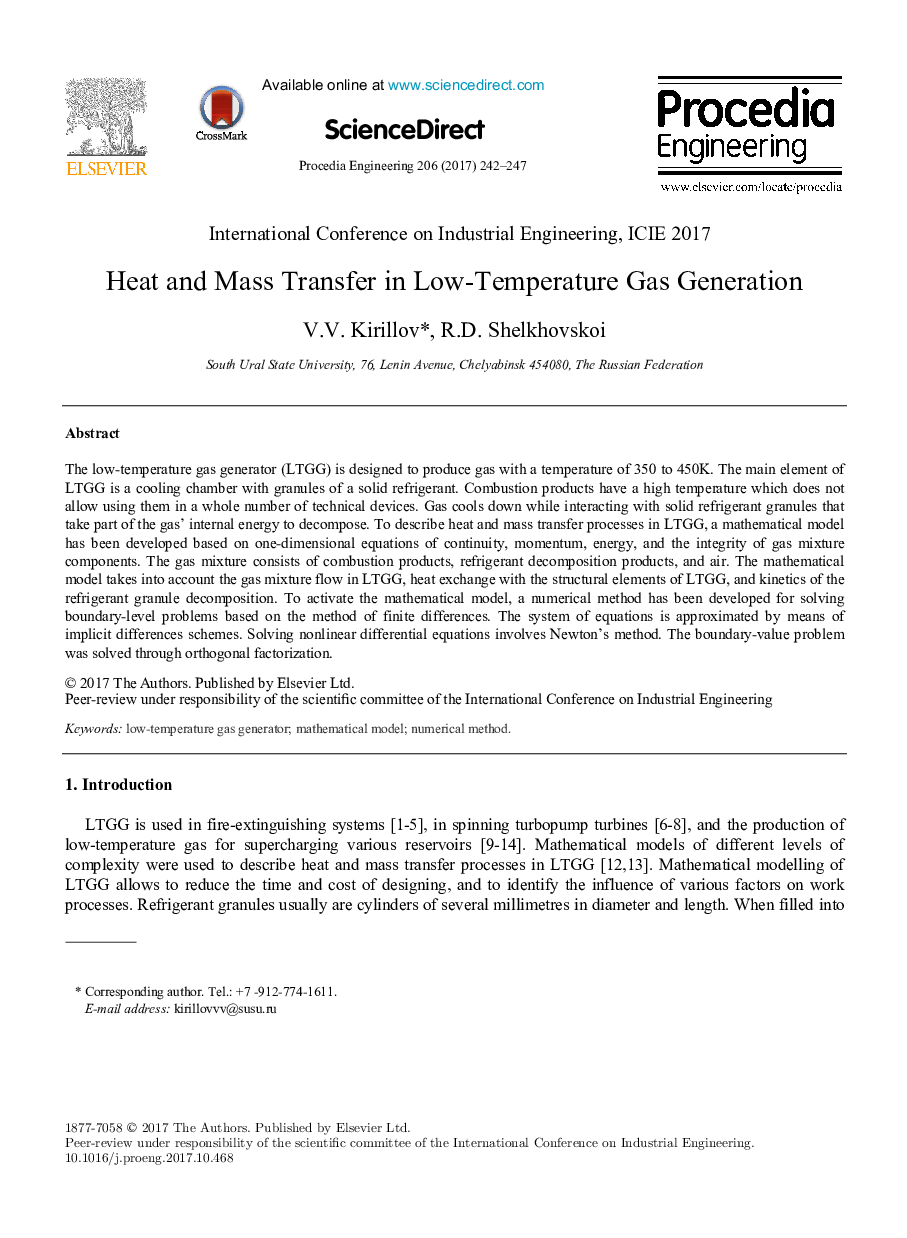| Article ID | Journal | Published Year | Pages | File Type |
|---|---|---|---|---|
| 7227415 | Procedia Engineering | 2017 | 6 Pages |
Abstract
The low-temperature gas generator (LTGG) is designed to produce gas with a temperature of 350 to 450K. The main element of LTGG is a cooling chamber with granules of a solid refrigerant. Combustion products have a high temperature which does not allow using them in a whole number of technical devices. Gas cools down while interacting with solid refrigerant granules that take part of the gas' internal energy to decompose. To describe heat and mass transfer processes in LTGG, a mathematical model has been developed based on one-dimensional equations of continuity, momentum, energy, and the integrity of gas mixture components. The gas mixture consists of combustion products, refrigerant decomposition products, and air. The mathematical model takes into account the gas mixture flow in LTGG, heat exchange with the structural elements of LTGG, and kinetics of the refrigerant granule decomposition. To activate the mathematical model, a numerical method has been developed for solving boundary-level problems based on the method of finite differences. The system of equations is approximated by means of implicit differences schemes. Solving nonlinear differential equations involves Newton's method. The boundary-value problem was solved through orthogonal factorization.
Keywords
Related Topics
Physical Sciences and Engineering
Engineering
Engineering (General)
Authors
V.V. Kirillov, R.D. Shelkhovskoi,
